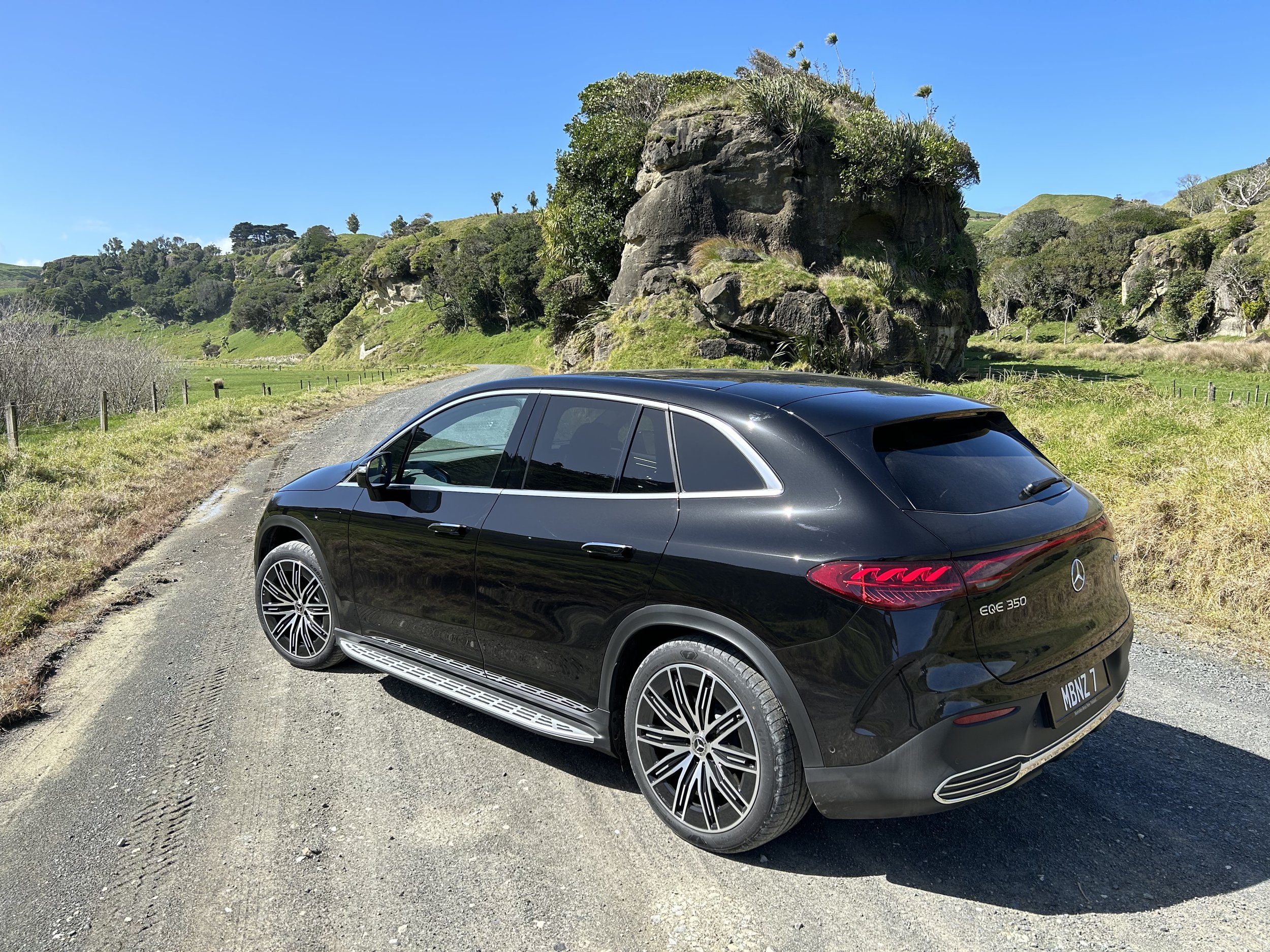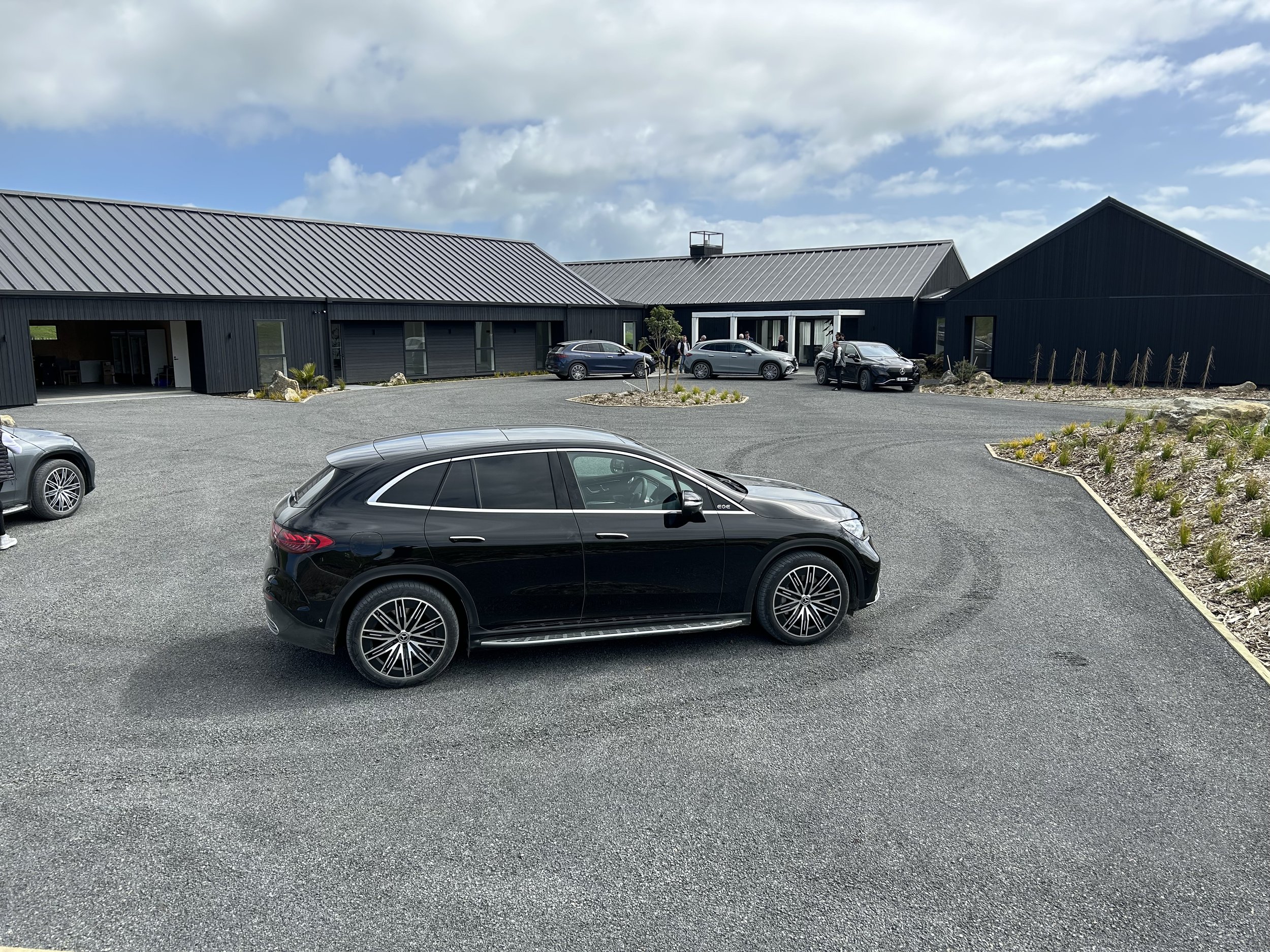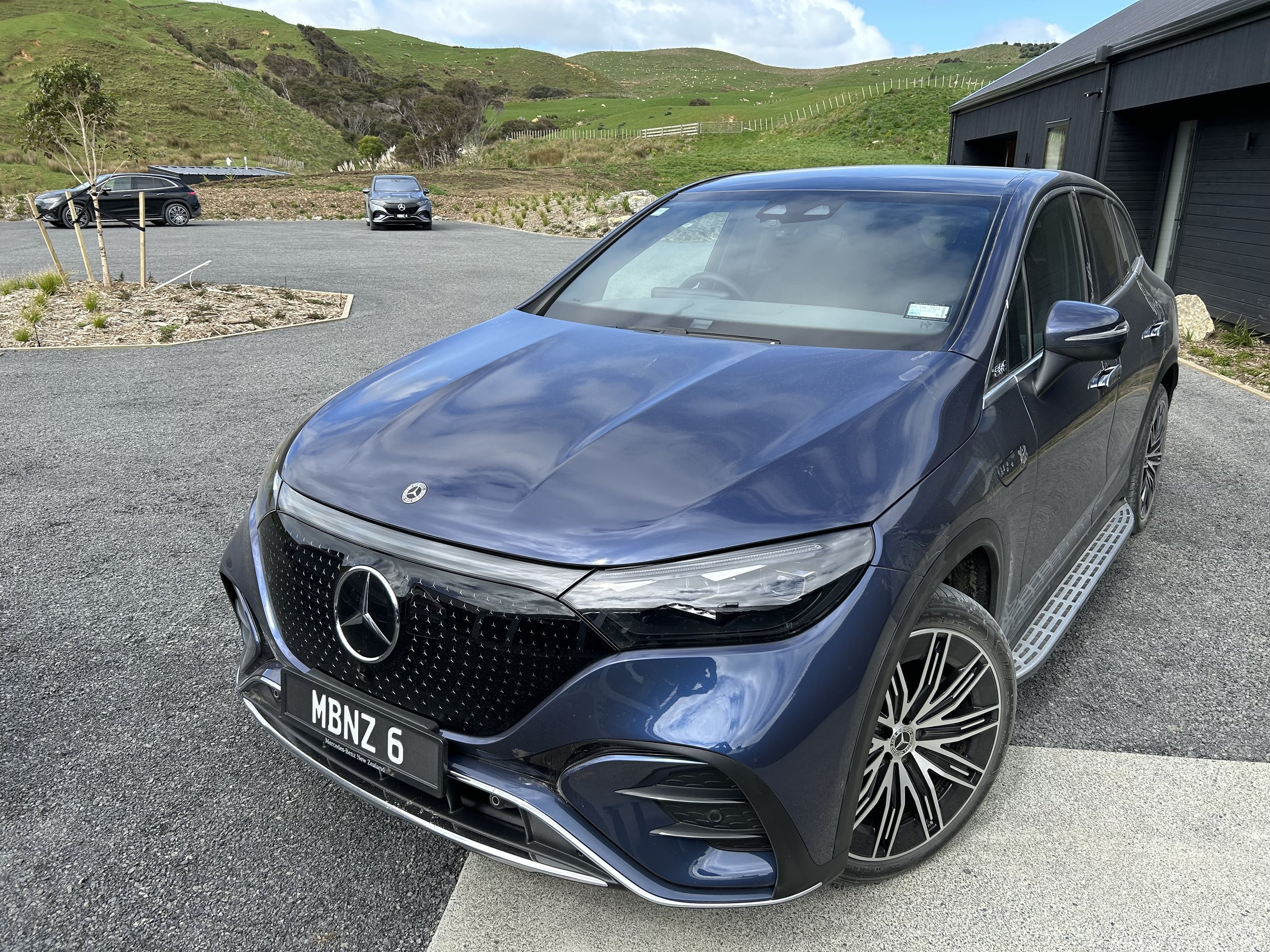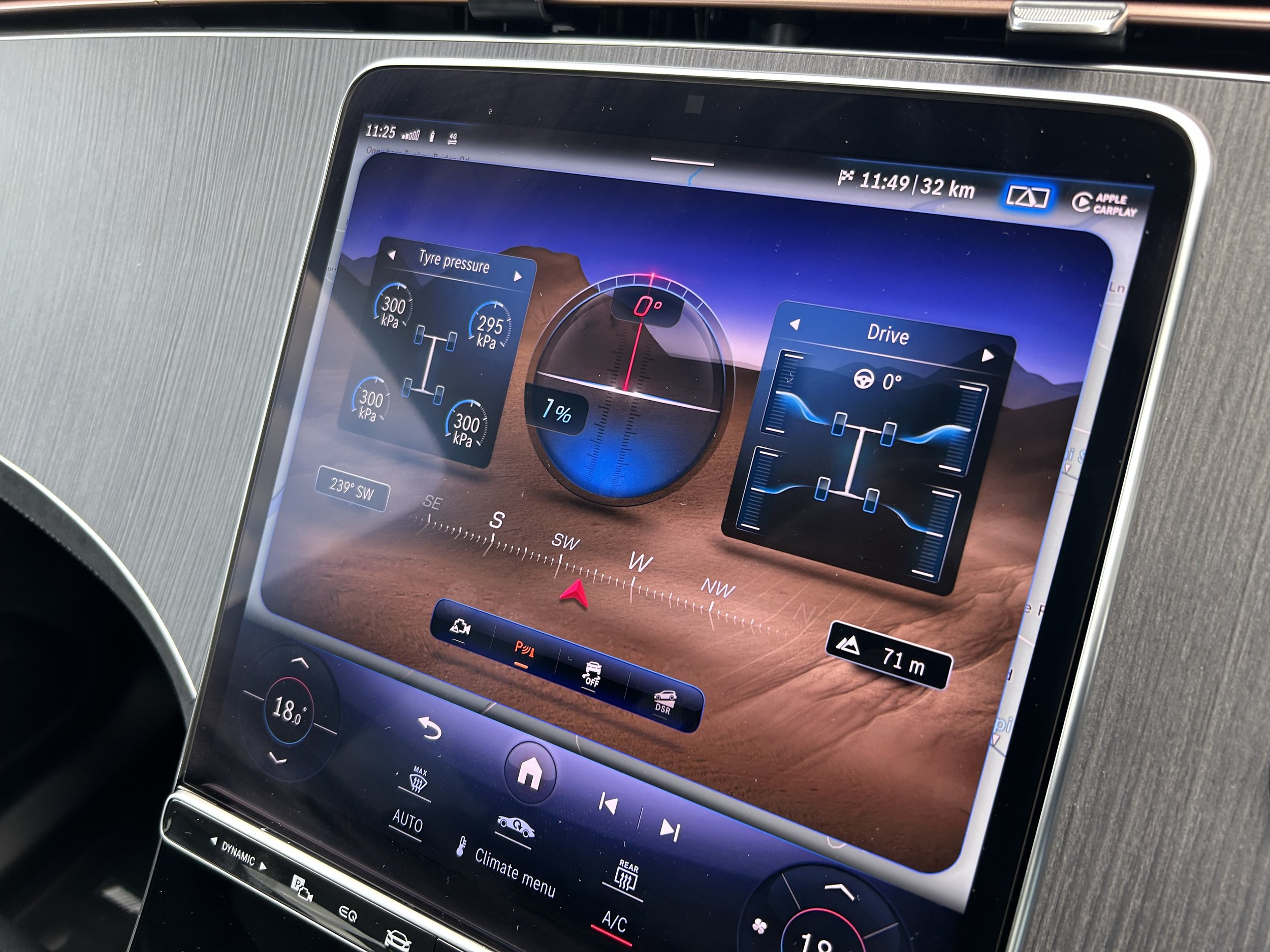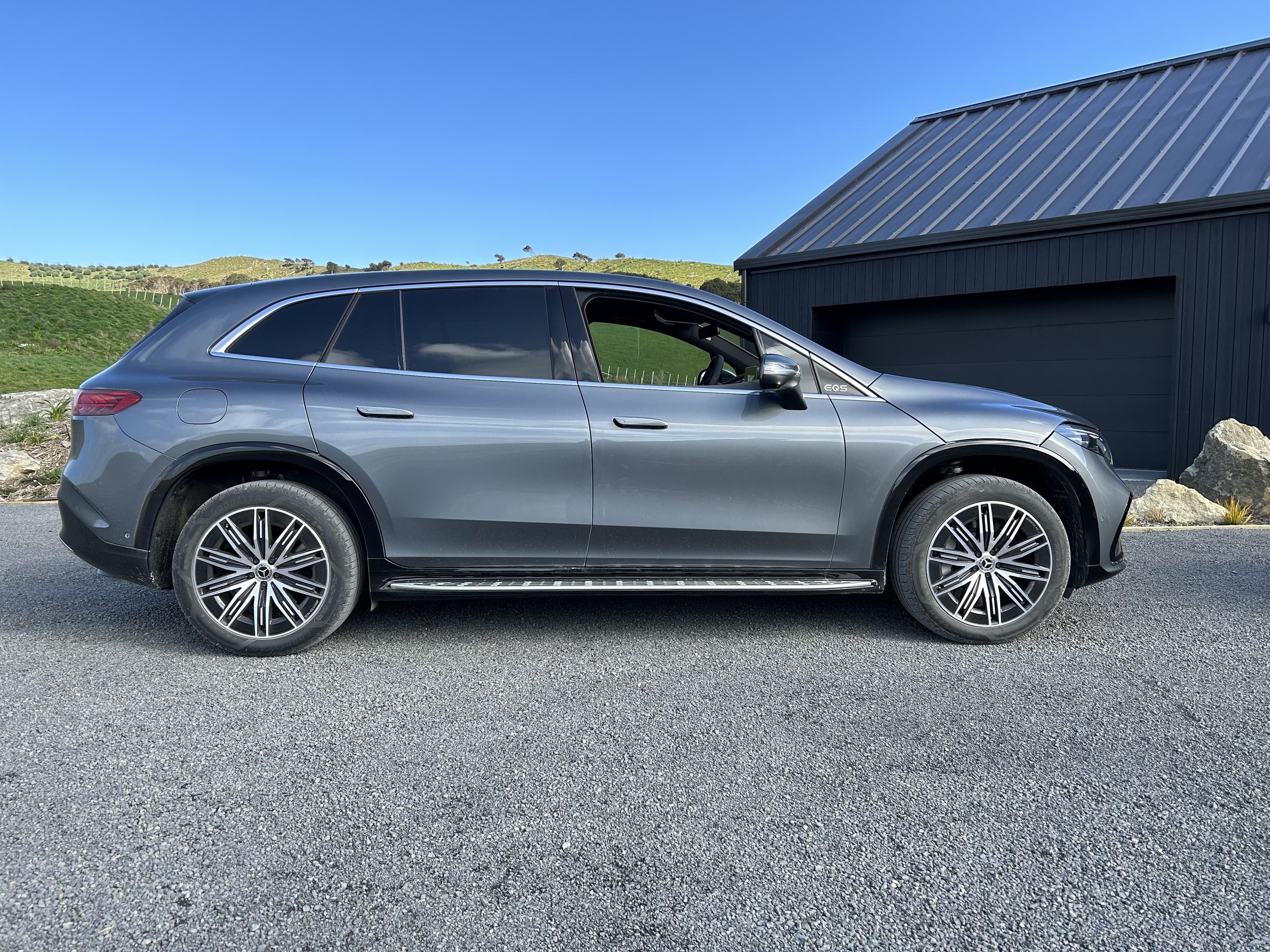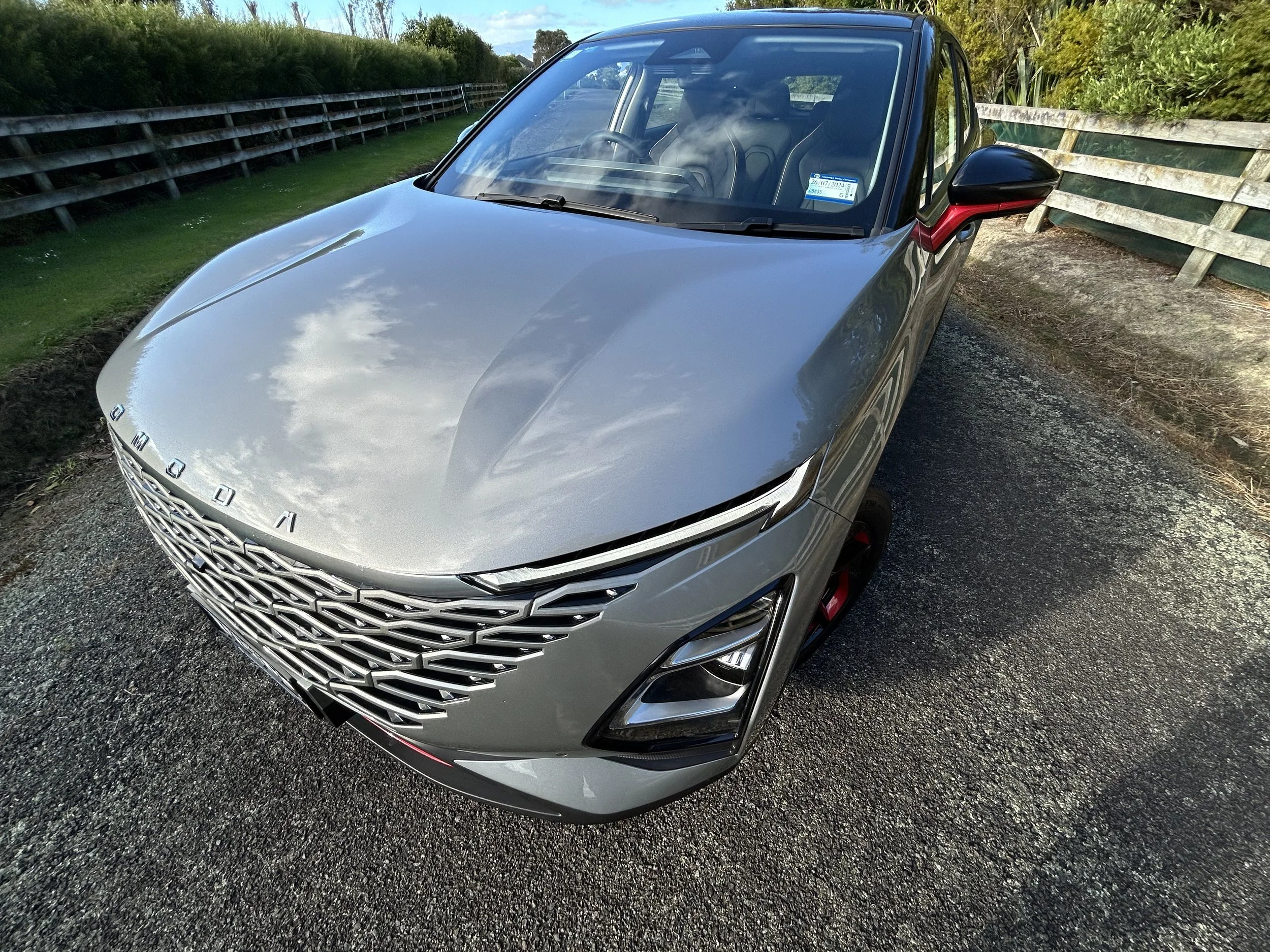Mercedes EQE SUV/EQS SUV first drive: Going large - and extra-large - on luxury
/Mercedes’ most powerful and affluent electric passenger choices now represent at a higher level.
RARE and in rare air - prestige family-suited electric sports utilities are an emergent thing, but Mercedes Benz has already gone big with them … and that push has just got bigger.
Sitting above the EQA, EQB and retirement-bound EQC are spins from the EQE and EQS sedans that propose as electric equivalents to the evergreen Mercedes E-Class and S-Class sedans.
Benz’s no-frills naming convention makes clear how the EQE SUV and EQS SUVs out now stand as alternates to those road cars.
Technical aspect is also a story of cross-pollination. The SUVs and sedans have the same common platform, with the same drivetrain - including, ultimately, a massive 108.4kWh battery for long range - and are equally upmarket.
Still, technically speaking, one of these resolves common conjecture on electric vehicle owner forums about how long before someone delivers a truly full-sized, fully family-friendly electric with all-rounder ability and car-like design.
If you have the cash, the EQS has that cachet, through being the first of that ilk to provision a fulsome seven seat layout.
EQE steps back to being a regular five-seater, though it’s also not set to short-change big spenders seeking significant space. Even though it actually has a shorter wheelbase than the equivalent sedan and is shorter overall, the SUV body nonetheless allows for more interior space and versatility than in the donor.
Styling similarity is such that, when parked up together, it’s not immediately obvious how much larger the EQS really is. But the tape measure relates that, while EQE is big, EQS is significantly bigger.
A serene driving experience is the primary pull with the largest fare. On strength of this first drive, it certainly lives up to comparison with the fabulous S-Class.
EQS felt truly regal on the return leg of a 160 kilometre drive route that took us from Auckland to be debut lunch guests at beautiful Te Karaka Lodge, a brand-new boutique rural retreat just south of Port Waikato.
Experience with the largest model occurred after I’d driven the EQE in its middle level all-wheel-drive format on the outbound run. Common to both drives was time on Auckland’s motorway, then chasing the Waikato river to its outlet, plus 20 minutes of gravel south from Port Waikato.
That exposure lent insight into how the continuity between at the cars goes beyond them being so alike in design that, from the outside, there doesn't seem to be much difference in appearance at all.The cabin environment are also strongly related; if you learn the ways of one ensures easy acquaintance with the other.
And yet … at 5125mm the EQS is the bigger boy by more than a whisker. At 262mm longer than the EQE SUV, and it's 17mm wider and 32mm taller as well, with an additional 180mm between the front and rear axle.
Benz has built even bigger in this category, but with an internal combustion engine involved. That’s the GLS, also seven seats, also very much still in circulation (a mid-life facelift will arrive before year-end). It’s longer, still, than EQS, which in itself feels quite large enough. A good time to remind that EQE, EQS and GLS are primary global products from Benz’s biggest factory outside of Germany; Tuscaloosa in Alabama. Given American taste for larger than large passenger vehicles, where to build them than the United States?
Some big American products find NZ roads something of a squeeze. Fortunately, the Benz cars are not as swaggeringly insouciant as a RAM 1500 or Chevrolet Silverado, so taking them onto a road that has held status as one of the best stages of Rally New Zealand was not too nerve-wracking.
Sure, you wouldn’t want to meet a stock truck in either, and the EQS asked for a degree of caution when taking on tight corners, but for a vehicle that weighs 2.8 tonnes it was reactive and far from bus-like.
Standard air suspension allows for an incredibly comfortable ride; the EQE I drove had that too, but the EQS nonetheless sailed over pot holes that jolted the smaller model. You can change the driving mode for firmer damping, and that certainly sharpens up the EQE. Conversely, push-on play really isn't what the EQS is about. It handled the rural section well given its considerable weight and size, with solid body control and decent steering, yet you could sense it being happiest being driven in a relaxed manner on the motorway.
That environment is where you particularly notice the astounding refinement. The lack of wind roar over the aerodynamic body, the lack of tyre and road noise though the chassis and the utterly silent electric powertrain. Electrics are mostly quiet, but this one is especially hushed.
This level of quality, their futuristic appearance and that they are crammed with technology and have genuinely plush interior environments are ingredients set to site them solidly when measured against the competition.
Which is? Well, there’s the thing. Benz of course signals the BMW iX and Audi Q8 e-tron as the most obvious current rivals, with the upcoming Volvo EX90 and perhaps even the Lotus Eletre also considered future foes.
These are all five-seaters, so conceivably cars that will be weighed specifically against EQE.
When it comes to delivering seven chairs with electric urge? Technically speaking, there’s just the one alternate, far removed on price, van-based and cast as a MPV. Would a potential Benz buyer even know the LDV Mifa9 exists?
Volume forecasts are not being shared but, despite EQS having unique placement and significant presence, chances of spotting the EQE are more likely, simply because it arrives in three formats, whereas with the biggest gun there’s the one type.
How much? Well, they’re not budget. Star power, least of all when batteries are included, removes them as choices for anyone on an average wage.
The EQE line kicks off with the EQE 300 SUV for $139,900. It’s the sole rear-drive of this family. The EQE 350 for $149,900 and AMG EQE 53 above that have the 4Matic all-wheel-drive, the Affalterbach-tuned edition having it in performance-tweaked Plus form. The last is a $199,900 car, rising into the low $200k zone if meted a Dynamic Plus Pack that elevates urge and handling.
Those stickers mean the entry edition, which is rear-drive, costs $7800 more than the corresponding sedan, while the all-wheel-drives carry a $4900 premium. Just to remind, the EQC400 4Matic that the EQE300 realistically replaces was a $142,900 ask. But, anyway, with EQE, the bigger body costs more.
With EQS SUV, it’s the other way around. A $196,500 buy, without options, EQS SUV is a clearly far from inexpensive, yet it’s siting beneath the namesake sedans.
By a massive $115k in respect to the AMG EQS 53 limousine - whose format, Benz people say, will not be replicated by the SUV (preference is to create an ultimate-choice Maybach that mat, or easy not, provision here).
What might influence buyer preferences is that EQS sedan that has the same dual motor 265kW/800Nm drivetrain, also fed by a 107.8kWh battery, as the SUV has a $23k premium, too.
The other figures always of interest are the cited ranges. Under WLTP test conditions, the EQS 450 4MATIC is expected to accomplish a maximum 483 kilometres’ driving, a 37km advantage over the EQE champion, the 300. The EQE 350 4Matic is good for 436km while the AMG 53 exhausts after 380km, according to that international scale.
With EQE sedan and SUV, the battery sizes are 89kWh unit for 300 and 350 and 90.5kWh for the AMG. Outputs crosscheck in the lowest and mid-spec formats of either - so 180kW and 550Nm and 215kW and 765Nm - but the AMG 53 SUV requires the Dynamic Pack to match the sedan’s 505kW and 1000Nm. In standard form, it has 460kW/950Nm.
These are cars built for hypercharging. DC charging at up to 170kW is claimed for EQE, and up to 200kW for EQS, the smaller car for a 10 to 80 percent official charge time of “as little as 32 minutes” on a 350kW charger. That expands to most of the day on a home wallbox.
All EQE variants are highly equipped, with the base trim including dual 12-inch screens, leather seats, 21-inch wheels, an AMG Line pack, a Burmester surround sound system, head-up display, panoramic sunroof, and a full suite of advanced safety technology.
The EQS arrives on 21-inch AMG multi-spoke alloy wheels, has a wireless phone charger, a 12.3-inch digital instrument cluster, a panoramic sunroof, 64-colour interior ambient lighting, and digital matrix LED headlights.
The 12.8-inch MBUX central infotainment system supports wireless Apple CarPlay and Android Auto and augmented reality satellite navigation.
Of the options, the $11,700 Comfort Plus pack seems the strongest candidate for selection, with any eye also to the $2900 rear-wheel steering upgrade. As standard it sports rear-axle steering with a steering angle of up to 4.5 degrees. The upgrade adds up to 10 degrees of steering angle. While EQS overhangs are minimised by the shape, it is still a big car to manoeuvre in tight spots.
The $6700 Hyperscreen, which melds the instrument cluster, infotainment screen and another 12.3-inch passenger screen into one dashboard is the ultimate in displays and looks fabulous. But is it necessary? The car as driven had the standard interface and, frankly, there was all the functionality you could possibly need, rendered with equally high-resolution graphics. It’s reasonably easy to get along with, although the touch-sensitive controls on the double-spokes of the steering wheel do take some getting used to. And it’s always irksome trying to fathom how to set the head up display.
EQE experience was limited to the 350 SUV; whose modes ramp up to an ‘off-road’ setting denied the rear-drive entry car.
The naming convention is a bit of a misnomer. The lack of absolutely tough mud-suited hardware and the modest ground clearance are reasons, alone, for leaving truly off-seal adventuring to the electric G-wagen Ben has promised. In EQE-speak, ‘off-road’ more realistically means the unsealed conditions the car hit along the coast.
Benefit from the mode in that condition was tangible. Ride height increases only slightly, but enough to reduce potential of striking jutting rocks, and it also seems to soften the traction and throttle responses, to point where loose surface traction is more amenable than in Comfort or in Sport, where you can expect some stone-spitting.
First rate cabin quality is a given with that model and the EQS. There are lots of plush materials used throughout, comfortable seats and quality fixtures. As SUVs go, they are reasonably low-set, to point where the running boards on some of the cars used seemed like an unnecessary addition.
With both, the second row seating area is expansive. With the third row in usage, EQS luggage capacity is a bare 190 litres, but drop those chairs and it increases to a minimal 565 litres, or 45 litres more than the EQE starts with, up to 800 litres, depending on where the mid row is positioned. Dropping the second seats creates spaces of 1675 litres for the EQE and 2020 litres for EQS. Either way, these have potential to be practical luxury cars, as well as a hugely comfortable ones.
With the full-sized, access to the rearmost row is via the middle row, which all adjusts electrically. As is often the case, space in that rearmost row is likely set to be best suited to kids. Fitting adults in there isn’t impossible, but that would require the middle-row occupants to compromise legroom. the latter is better than will be found in a ICE equivalent as here the floors are completely flat, courtesy of the cars’ electric powertrain. Headroom is not a problem in either.
Cabin storage seems similar across both types, with a flip-up lid on the centre console opening to reveal the phone charging pad and cup holders, while the large, soft armrest features a deep storage bin beneath it, too. Big door bins also feature.
In terms of efficiency. Smooth, constant pace motorway driving is where you’ll stand best chance of getting close to official energy consumption figures. The EQS completed its journey showing an average of 23.5 kWh per 100km, around 20 percent above the cited best.
Still, it was carrying three to four occupants and had a boot load of luggage. And while consumption was above normal, there was enough juice remaining in the ‘tank’ for the car to have at least repeated that journey.
That price positioning puts these cars outside the mainstream will clearly define the acceptance, but every story has a starting point.
Just that they exist at all is no small feat when you consider that, five years ago, these cars were simply concept propositions and, five years before that, were absolute flights of fancy. Who knows what will deliver, from whom, within five years from now?
The writer attended this event as a guest of the distributor, with travel, accommodation and a meal provided.



